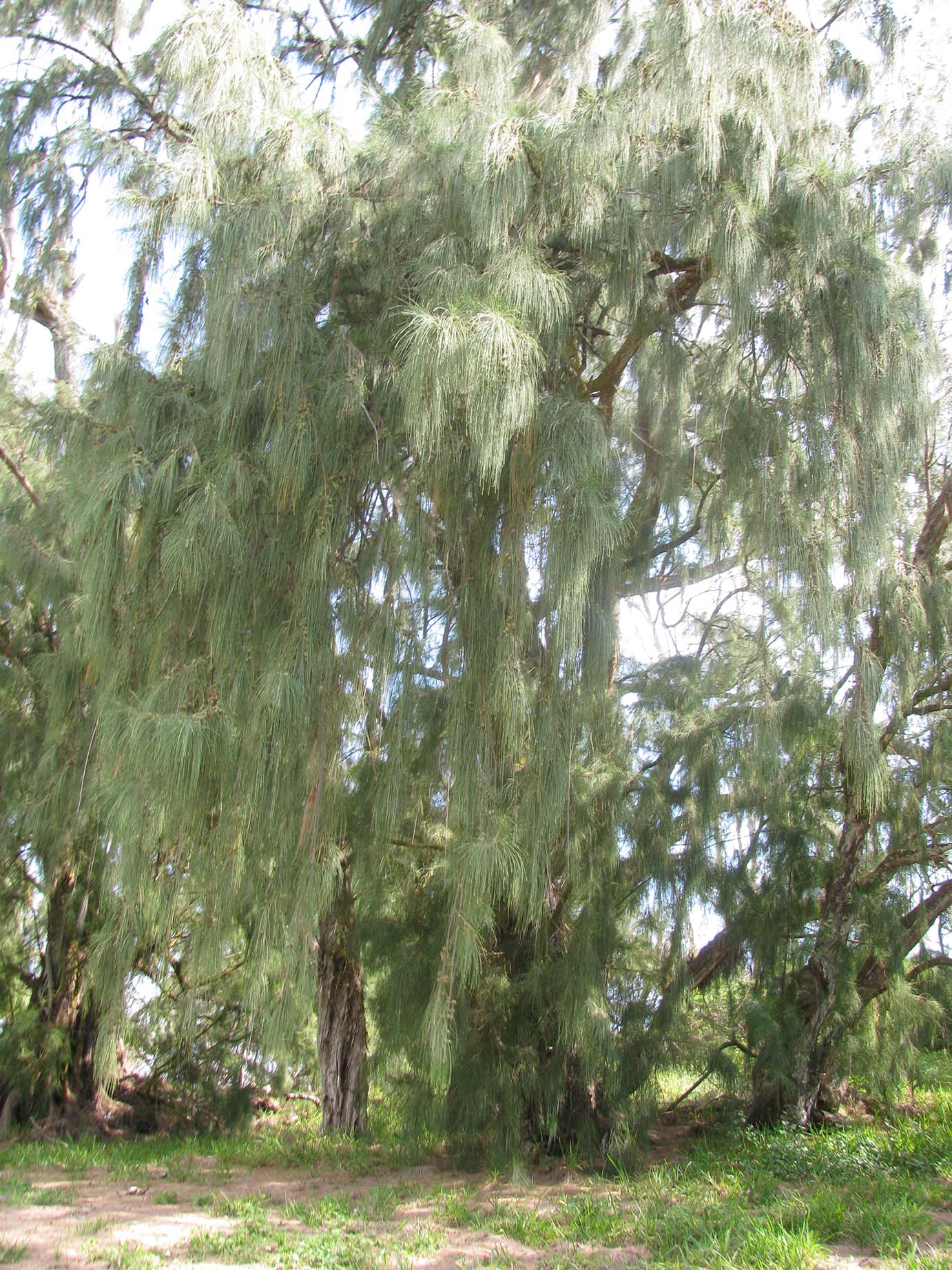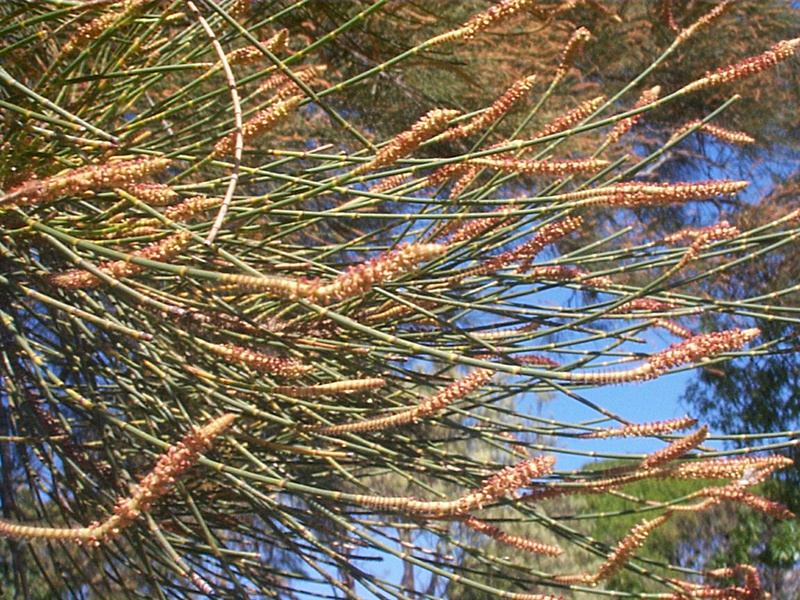Evergreen tree, greyish-brown bark has oak-like appearance, branchlets spreading or drooping. Can be found solo or in dense stands.
Usually 8 – 15 m high. Can reach a maximum of 20 m high (rarely) and only reaches 2 m high on clifftops. The trunk can be up to 35 cm in diameter. This tree is also found in prostrate form (lying flat on the ground), reaching 30 cm high and 2 m wide.
Leaves
Segmented branchlets with very small teeth-like leaves (0.6 - 0.9 mm long), 12 – 17 leaves arise at the nodes of segments. New growth is strongly recurved (bent or curved backwards or downwards) and become erect as they mature.
Flowers
This species is dioecious (male and female reproductive structures develop on different individuals). Male inflorescences (arrangement of flowers) are spikes, growing 1.2 – long with 7 - 10 whorls per cm (ring of floral parts borne at the same level) and a 0.8 mm long anther (pollen-bearing part of the stamen).
Fruits/Seeds
Cylindric, ovular cones are 9 - 18 mm long and 7 - 9 mm in diameter are found on a 3 - 12 mm long stalks. Cones range from rust-coloured to white; they are pubescent (covered with short, soft, erect hairs).
Samaras (dry fruit with wings that do not open) are 3.5 – 6mm long (including the wings).
Field Guide
Improve your identification skills. Download your Swamp She-Oak field guide here!





